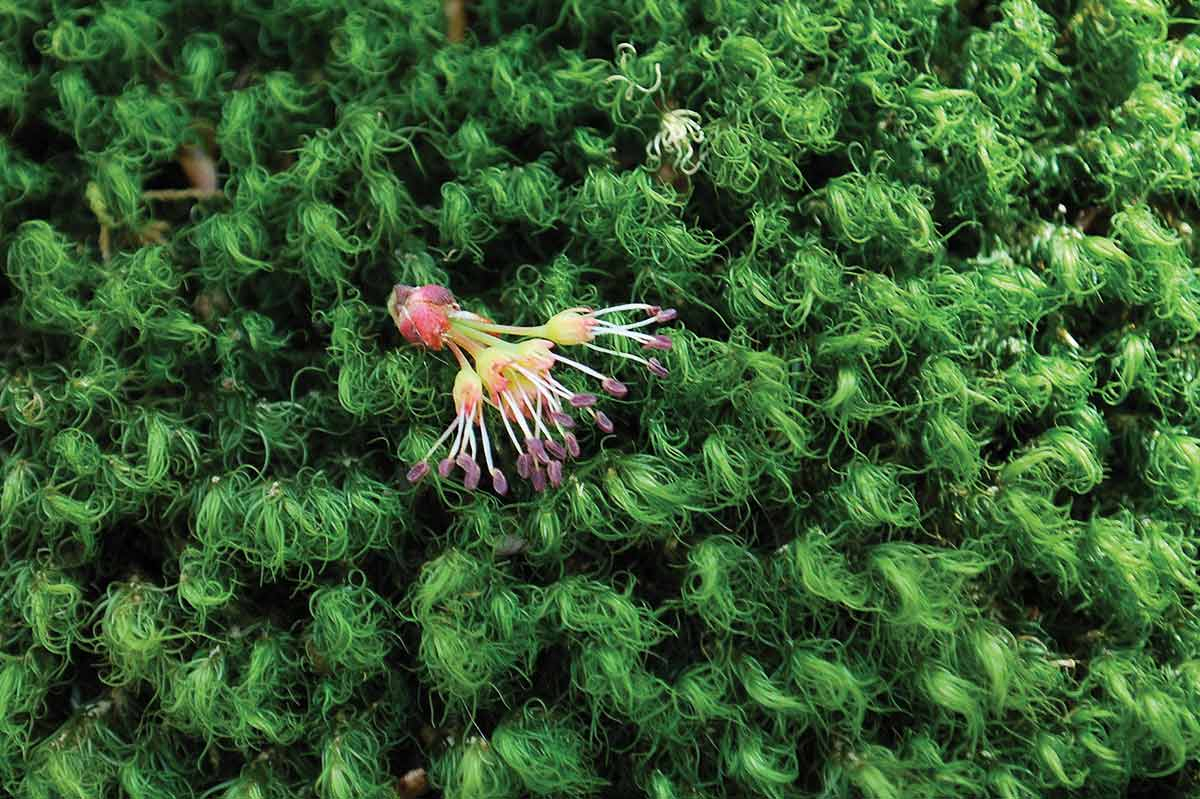Notes from a Plant Nerd: Red Maple Winter
 A red maple flower sits on a bed of moss. Adam Bigelow photo
A red maple flower sits on a bed of moss. Adam Bigelow photo
There’s a change in the air every year around this time. A subtle shift in energy. Days start getting longer, and sunset occurs later each day. Birdsong sings louder in the morning, and the sounds of wood frogs echo through the valleys.
If you do happen to notice, you’ll see the male flowers of hazel alder (Alnus serrulata) start to elongate and turn yellow. And a light red haze will begin to glow as the red maple (Acer rubrum) buds first swell, then open to produce one of the earliest flowers to bloom in the year.
Red maple winter.
Now I ain’t from around here, and I don’t claim to be an expert on Appalachian folkways and lore. But since I began studying with plants over 20 years ago, I started hearing about what I have come to know as the “Little Winters of Appalachia.” My initial encounters with this phenomenon were in reference to “blackberry winter” which signifies the end of cold weather, the beginning of Summer, and time to plant tomatoes in Western North Carolina.
It turns out, though, that there are a whole bunch of little winters that lead us through the freeze and thaw and freeze again as winter changes through spring to summer. And, as I understand it, all these little winters correspond with a cold snap that is followed by the blooming of a different species of tree. Although some claim it is the bloom that happens first, and then a cold snap soon follows. Either way, a long time ago people didn’t have fancy clocks and calendars on their phones, or long-range weather forecasts that could tell them when it was time to do certain things around the house and farm. A long time ago, there also used to be winter.
People relied on signs and signals told to them by the plants growing around them, a language learned through long years of study and connection to place. The typical progression of blooming trees was (and still is) a calendar that can be read as clearly as the one on your phone if you know the language of how to read the signs. Redbud (Cercis canadensis) blooms lead to black locust (Robinia pseudoacaccia), then dogwoods (Benthemidia florida) followed by blackberries (Rubus allegheniensis). This is the most known and traditional progression.
Related Items
And, whatever you do, do not plant your tomatoes before blackberry winter, which is when all the blackberry bushes around you are in flower. I like this as an indicator for planting summer vegetables, rather than using the official frost-free date of May 15th. Or even using Mother’s Day, which is a commonly cited safe panting time. What I like about following the blackberry winter admonition is that it is based on phenology, which is the scientific study of when things happen in nature. And the blooming of plants and flowers does not all happen on the same day every year, or even the same day in our region. It depends on your local conditions and microclimate, influenced by things like elevation, slope, facing and other environmental factors.
There are many more trees and shrubs that flower in a predictable progression, than the four species most commonly known. And I think these trees deserve their own little winter designations. Like serviceberry winter, which told mountain folk when the travelling minister be visiting after the long, cold and frozen winter. You knew it was time for services only the preacher could perform, like weddings and funerals, when the serviceberry or “sarvis” (Amelanchier arborea) was blooming on the mountainsides.
Or what about black cherry winter (Prunus serotina) or shrubs like pussy willow winter (Salix spp.) and spicebush winter (Lindera benzoin) which correspond with the first blooming wildflowers. Or what about one of the most common trees in all of the forest, the one that is in bloom all around as I write this, and that was the inspiration for this week’s article? What about the red maple? Doesn’t it deserve its own little winter? Especially since it actually blooms in what used to be called winter. Y’all remember when we used to have winter?
(Adam Bigelow lives in Cullowhee and leads weekly wildflower walks and ecotours through Bigelow’s Botanical Excursions. This email address is being protected from spambots. You need JavaScript enabled to view it..)









